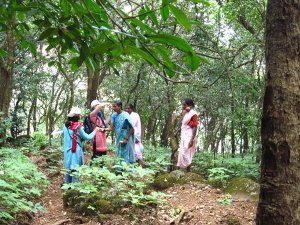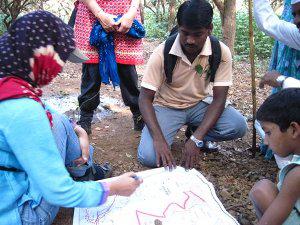Neema Pathak-Broome
Working towards a better habitat for wildlife and local people in Bheemashankar Wildlife Sanctuary by resolving the conflict situation between people and wildlife needs.

By helping local villagers strengthen their local level governance institution, assert rights over natural resources and prepare an effective management plan for the area, and helping them identify ecologically appropriate sources of livelihoods we hope to move towards a wildlife conservation programme integrated with local livelihoods.

The overall objective is to create support for conservation among the local people, making conservation work for the benefit of the local people and to eventually arrive at and facilitate a joint protected area management strategy for Bhimashankar Wildlife Sanctuary. This we hope to do by creating positive links between various stakeholders and specifically by:
1. Creating awareness about the wildlife and ecological value of the sanctuary among the local people and children. Re-instilling a sense of pride in local knowledge and traditional association with the sacred groves which are an integral part of the sanctuary. Creating awareness about the value of the sanctuary among the political leaders and tourists coming to the area;
2. Documenting traditional knowledge by the local people related to biodiversity, traditional natural resource management strategies and ecologically sensitive cultural practices;
3. Facilitating the process of strengthening local governance systems and linking these structures with effective management and conservation of the surrounding forests;
4. Developing capacity building programmes for formal and non formal governance structures in the villages;
5. Promoting economically and ecologically sound livelihood generation activities through government programmes such as National Rural Employment Guarantee Scheme (NREGS) and linking them with natural resource management related programmes and laws such as the Forest Rights Act 2006, Biological Diversity Act 2002, and watershed management schemes and so on;
6. Facilitating implementation of and tracking the implementation of the Forest Rights Act 2006 to help people effectively use, manage and assert protection rights over their surrounding resources.
We intend to this achieve by carrying out a number of activities, which have been and are to be decided by and with the local people. These activities will include, organising village meetings to facilitate greater interaction within the village related to governance of the village and its surrounding ecosystem, organising local sports events to include youth, organising and reviving cultural activities which have direct links with conservation, bio-diversity festivals, sharing information with the villagers regarding available government and non-government policies and schemes that they can avail of and facilitating such processes and eventually facilitating a process of ecosystem management through the local youth group.